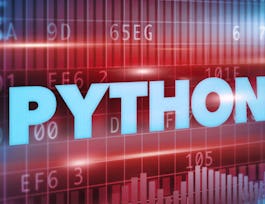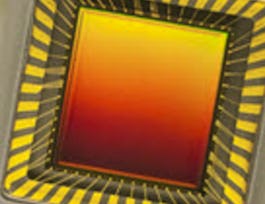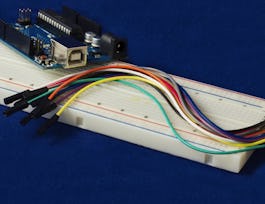Arduino senses the environment by receiving inputs from add-on devices such as sensors, and can control the world around it by adjusting lights, motors, and other actuators. In this class you will learn how and when to use the different types of sensors and how to connect them to the Arduino. Since the external world uses continuous or analog signals and the hardware is digital you will learn how these signals are converted back-and-forth and how this must be considered as you program your device. You'll also learn about the use of Arduino-specific shields and the shields software libraries to interface with the real world. Please note that this course does not include discussion forums.


Interfacing with the Arduino
This course is part of An Introduction to Programming the Internet of Things (IOT) Specialization
Taught in English
Some content may not be translated

Instructor: Ian Harris
110,779 already enrolled
Included with 
Course
(3,864 reviews)
95%
Details to know

Add to your LinkedIn profile
4 quizzes
Course
(3,864 reviews)
95%
See how employees at top companies are mastering in-demand skills

Build your subject-matter expertise
- Learn new concepts from industry experts
- Gain a foundational understanding of a subject or tool
- Develop job-relevant skills with hands-on projects
- Earn a shareable career certificate


Earn a career certificate
Add this credential to your LinkedIn profile, resume, or CV
Share it on social media and in your performance review

There are 4 modules in this course
IoT devices involve a combination of software and hardware. This module provides background on the basics of hardware design and wiring needed to build useful circuits. This module describes the functions of basic passive components and describes how to use them in simple circuits. This module also describes how to wire circuits together using a breadboard. The goal of this module is to enable students to design and implement the circuits they need to interact with basic sensors and actuators.
What's included
10 videos3 readings1 quiz1 peer review
This module introduces sensors and actuators and discusses how to interface with them. We’ll examine different classes of sensors and actuators. For each type of sensor/actuator, we’ll examine the circuitry needed to interface with it. Additionally, we’ll take a look at the Arduino code needed to communicate with the sensors and actuators.
What's included
10 videos1 reading1 quiz1 peer review
This module introduces the use of software libraries with an Arduino sketch. One of the best aspects of the Arduino environment is that the use of good libraries allows a programmer to use complicated hardware without dealing with the complexity. The Arduino environment is supported by many libraries and this module examines the use of several of the more common libraries that allow the use of hardware peripherals in the microprocessor.
What's included
10 videos1 reading1 quiz1 peer review
In this module we’ll examine Arduino shields and how they are used to extend the capabilities of an Arduino-based system. Shields are printed circuit boards that are stacked on top of the Arduino together with libraries that enable the new hardware to be used through an Arduino sketch. We’ll describe the benefits of shields and their basic construction as well as the use of libraries in interfacing with each shield. This module also describes how to connect your IoT device to the Internet using shields. We focus on an Ethernet shield in order to establish a wired network connection, and a WiFi shield to establish a wireless connection.
What's included
10 videos2 readings1 quiz1 peer review
Instructor

Offered by
Recommended if you're interested in Electrical Engineering

University of California, Irvine

University of California, Irvine

University of California, Irvine

University of California, Irvine
Why people choose Coursera for their career




Learner reviews
Showing 3 of 3864
3,864 reviews
- 5 stars
74.86%
- 4 stars
20.32%
- 3 stars
3.36%
- 2 stars
0.77%
- 1 star
0.67%

Open new doors with Coursera Plus
Unlimited access to 7,000+ world-class courses, hands-on projects, and job-ready certificate programs - all included in your subscription
Advance your career with an online degree
Earn a degree from world-class universities - 100% online
Join over 3,400 global companies that choose Coursera for Business
Upskill your employees to excel in the digital economy
Frequently asked questions
Access to lectures and assignments depends on your type of enrollment. If you take a course in audit mode, you will be able to see most course materials for free. To access graded assignments and to earn a Certificate, you will need to purchase the Certificate experience, during or after your audit. If you don't see the audit option:
The course may not offer an audit option. You can try a Free Trial instead, or apply for Financial Aid.
The course may offer 'Full Course, No Certificate' instead. This option lets you see all course materials, submit required assessments, and get a final grade. This also means that you will not be able to purchase a Certificate experience.
When you enroll in the course, you get access to all of the courses in the Specialization, and you earn a certificate when you complete the work. Your electronic Certificate will be added to your Accomplishments page - from there, you can print your Certificate or add it to your LinkedIn profile. If you only want to read and view the course content, you can audit the course for free.
If you subscribed, you get a 7-day free trial during which you can cancel at no penalty. After that, we don’t give refunds, but you can cancel your subscription at any time. See our full refund policy.

